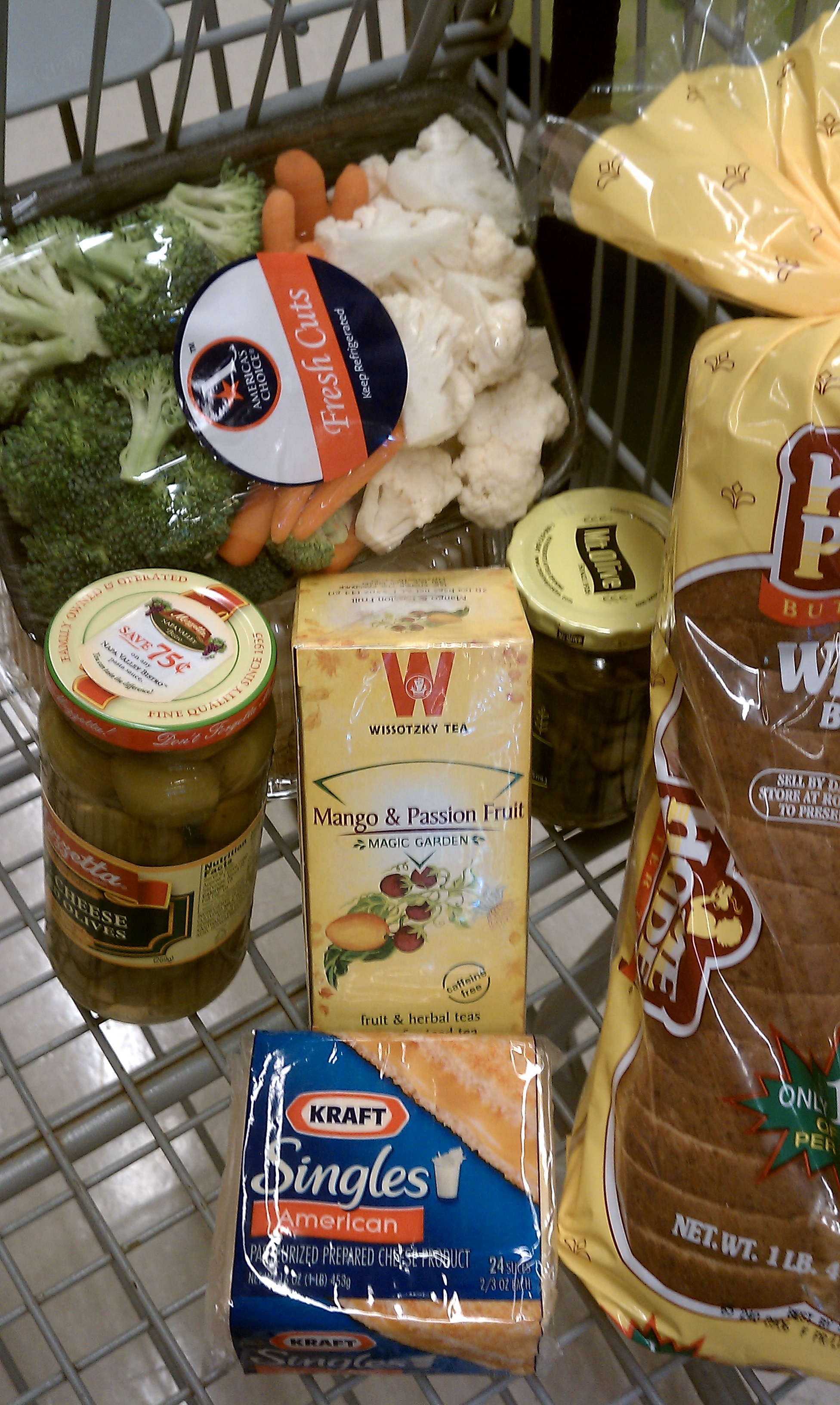Last week I blogged about whether or not brand awareness, specifically aided awareness really matters in a digital and shopper marketing world. Some comments appeared in linkedin groups, saying that the traditional view that awareness precedes purchase must, of course, still be true.
I decided to analyze my shopping cart from a recent trip and I am more convinced than ever that the traditional awareness driven linear AIDA model only drives a fraction of what goes in the cart.
Here is my shopping cart about half way through a fill-in trip, and the “play by play”. 
- Wissotzky tea: I never heard of this brand before and tea was not on my list. There was a nice in-aisle free standing display that caught my eye. I’m not a big tea drinker, but mango and passion fruit flavor sounded nice, so what the heck? Brand awareness, interest, and purchase all happened simultaneously.
- Olives stuffed with blue cheese: The product was on my list but I couldn’t tell you (even now) what the brand is
- Jalapeno slices: impulse purchase. Something I like, haven’t bought in a while, but they were right next to the olives. Couldn’t tell you the brand.
- Kraft American Cheese slices: the only brand of American Cheese I have bought for years. I’m sure TV advertising had a lot to do with this, but I can’t tell you the last time I saw a commercial for this product.
- Precut veggies. Store brand. Discovered precut veggies of broccoli, cauliflower, and carrots at retail some time ago and wanted a healthy snack.
- Lemon Meringue Pie. (Hidden under the veggies). Store brand, a regular item in the house (my wife loves this). Discovered at retail one day.
- Home Pride whole wheat bread. Discovered at retail many years ago and I have a strong preference for this brand (not bland like white bread, not dry like other whole wheat).
Now, I must confess, this isn’t the first time I’ve done this and it always comes out the same; a minority of the products I buy reflect strong brand loyalty and of those, many I just discovered at retail one day (Seattle’s Best Henry’s Blend and Everybody’s Nuts flavored Pistachio nuts are two additional examples.). In fact, I once kept a diary of all brands I used (not messages exposed to but actually used). I reached 77 brands by 2PM when I stopped (it got tiring!) but the big finding was that I only felt loyalty to 5 of the 77 and about one-third of the products I couldn’t even tell you the brand name. For example, making coffee involves 8 brands (coffee maker, filter, coffee, countertop, spoon, cup, milk, and the outlet I plug the coffee maker into.) I know 3 brand names of the 8 products and only feel loyalty to one (the coffee) and even at that, I don’t buy that item all the time. However, to be fair, the coffee maker is a Mr. Coffee and I’m sure all those ads with Joe DiMaggio got that brand in my consideration set.
My belief is that three things come together to produce purchase outcome; brand meaning (usually non-exclusive, more about acceptability and matching to needs), activation (getting me to want that type of product, displays, right features, sales), and shopper heuristics (how I choose to buy this type of product). Brands are very important, but more often than not, they add value to me by simplifying my shopper decision making rather than being a brand I am engaged with. Brand meaning can be created via advertising, social interaction, or now more spontaneously at point of purchase via shopper marketing or mobile apps. There is no single answer; these are just different plays in the marketing playbook to be guided by shopper insights research into the shopping styles for that type of product.
Marketers find themselves in a world where the great majority of brand-consumer relationships are based on non-exclusive brand beliefs which give shoppers choices; that explains why many or most brand purchase decisions are made at retail. Marketers will want to dial up the exclusivity of what their brand stands for and owns (see blog on this) or change the way a shopper shops. Get them to start looking for YOUR brand rather than a type of product. Otherwise, national brand marketers will remain challenged to support their price differential vs. store brands.


Contribute to Discussion »